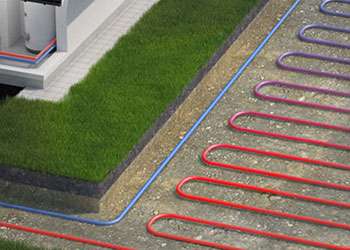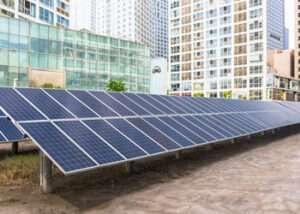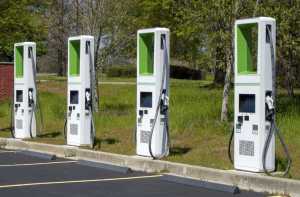Share This Post
Cindy McCabe – January 2021
Let’s start by going over the metering of electricity. All property that has wired electricity in Maryland, and in most of the continental U.S., has a meter to measure how much electricity is used so that you can be billed for it. These meters are owned by the utility company that provides the electricity to each building or unit. Most buildings and units now have smart meters installed, which allow the utility company to read the number of kilowatt hours, or kWh, that the structure has used in each billing period.
Now let’s talk about net metering. A net meter is a special type of smart meter that can count backwards. When you have a solar PV system installed, the utility company will come to your house to take off your old meter and replace it with a net meter. A net meter looks like a smart meter and can also be read remotely, however, not all smart meters are net meters.

When the sun rises, your solar system will start to generate
electricity and it will send that electricity directly to your electric panel. Whatever electric devices that you are using at the time will use that solar energy without you even noticing, and your solar inverter will keep count of the electricity that is produced.
If you need more electricity than your solar system is producing, your home will automatically pull electricity from the utility company, or the grid, and the number on your meter will increase, counting the number of kWh that you are using from the grid. Most homes with a solar PV system still need to pull electricity from the grid, especially at night.[1]
When your solar PV system produces more electricity than your home or business can use, the extra electricity will go through the net meter and back to the grid, causing your net meter to count backwards. Not only are you erasing previous grid electricity usage this way, but you are also helping to reduce the amount of electricity that needs to be generated by non-renewable sources of the utility company.
When you receive your monthly utility bill, there will be a solar generation table on it, showing the amount of solar energy that you generated. If you generated more solar energy than the total amount of grid electricity that you used in that billing period, you will have net metering credits. These credits are carried over month to month and usable as credits during each month until the end of the utility fiscal year, March 31st. At that time, any unused net metering credits will be converted to dollars at the supply rate listed on your bill.
The utility company’s buyback rate, however, is so much lower than the retail rate of electricity that you would not benefit financially from generating more energy than you can consume in a year. If you had a solar pv system that was larger than your need for electricity, you would be paying more to generate the energy than you would get paid back at the end of the fiscal year.
Net metering in Maryland is currently capped at 1,500 MW, which meaning that once 1,500 MW of solar PV is installed in the state, no additional solar customers would be allowed to sell excess solar generation back to the grid for credit. As of 2019, the state had reached approximately 754 MW. The Maryland legislature is looking at increasing this cap, and you can read more about the new bill: Legislation SB0407 here. This increase will assist in supporting our households and the renewable energy sector across the state.
Cindy McCabe is the Residential Solar Program Manager for the Montgomery County Green Bank. She has worked in the solar industry for the past six years with responsibilities including project management, solar system design, inspection coordination, site survey coordination, operations management, and sales. Cindy lives in Rockville, MD and considers herself an avid environmentalist.
[1] With battery backup installed, the home could draw from battery power at night.




















